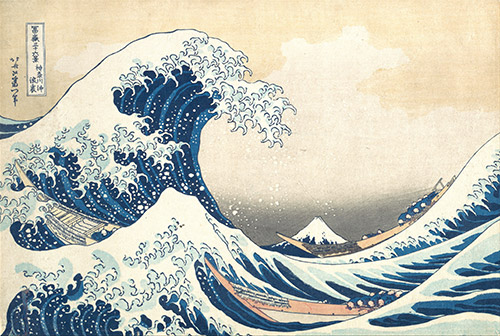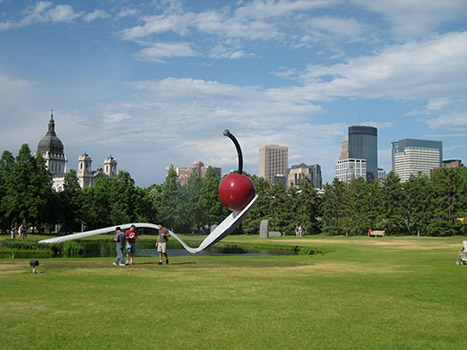Learn
Balance and Proportion
Balance is the principle of design that refers to the arrangement of elements in an artwork.
When artists use balance in art, that does not mean that everything is perfectly symmetrical. It just means that the objects, space, and color that an artist uses is equally distributed across the work of art.
There are three types of balance:
- symmetrical,
- asymmetrical, and
- radial.
Symmetrical balance is achieved by arranging the elements on either side of the center of a composition in an equally weighted manner. It’s like a mirror image. It creates a formal, elegant feeling to a work of art.

This illustration of an African mask has symmetrical balance. See larger version of African mask here.
Asymmetrical balance is achieved when the elements are not identical on either side of the center of a composition. The sides are different, but it is still balanced. It creates a more casual, free, and energetic work of art.

Katsushika Hokusai, Under the Wave off Kanagawa or The Great Wave, 1830-1832, woodblock print, ink on paper. See larger version of Under the Wave off Kanagawa here. Image is in the public domain.
To see another example of asymmetrical balance, look at Jacob Lawrence's Street to Mbari from 1964.
In radial balance, the elements radiate out from the center point of a circle. Radial balance draws your eye to the center of the composition.

See larger version of the rose window here.
Proportion is the principle of design that is the feeling of unity created when all parts (sizes, amounts, or number) relate well with each other. Proportion refers to the relative size and scale of various elements in a composition. It describes the size, location, or amount of one thing to another.
When drawing the human figure, proportion can refer to the size of the head compared to the rest of the body.

Artists use proportion to create the feeling of unity, which is created when all parts (sizes, amounts, numbers) relate well with each other.

© Benton, Thomas Hart. Corn and Winter Wheat. 1948, oil on canvas, National Gallery of Art. In Corn and Winter Wheat (1948) by Thomas Hart Benton, the haystacks are in correct proportion to the other objects in the painting. The colors and lines relate well with each other. See a larger version of Corn and Winter Wheat here.
Scale is the size of an object in relation to another object.
In proportion the relationship between objects is constant regardless of size. In scale, the size can vary. There can be small, medium, and large versions of the same object.
Enlarging everyday objects to enormous proportions is one way artists incorporate scale into their artwork, including Spoonbridge and Cherry (1985-88) by Claes and Coosje van Bruggen Oldenburg.
Notice the scale of the Spoonbridge and Cherry sculpture compared to the Minneapolis skyline behind it and the people in front of it.

Image "Famous Spoonbridge and Cherry Sculpture with the Minneapolis Skyline" by Richie Diesterheft licensed under CC BY 2.0.
